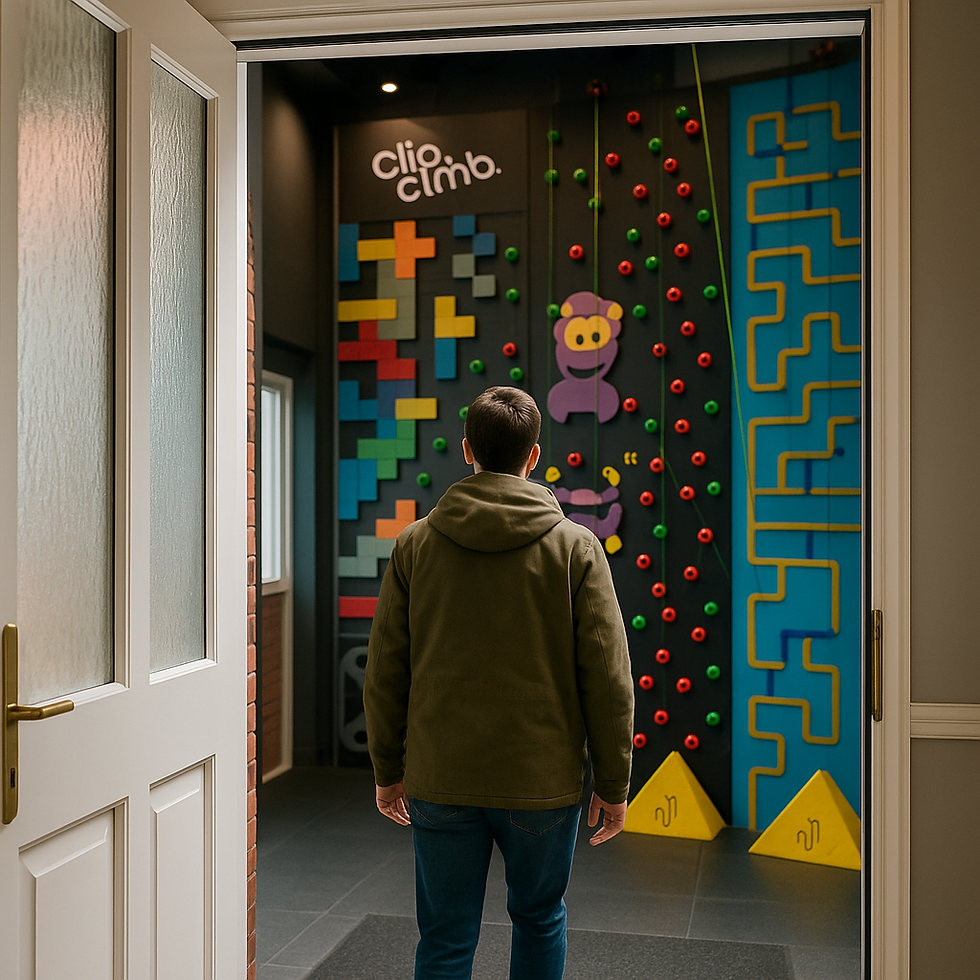The Hidden Complexity of Buying or Selling a Climbing Wall
- Jez Tapping

- Nov 13
- 4 min read
As the climbing industry matures, the movement of physical climbing wall structures - panels, frames,
steelwork, bouldering islands, rope walls, auto belay lines, Clip and Climb elements (modular sections) - has increased dramatically.
Refits, expansions, relocations, and closures now happen far more frequently, creating a growing market for used climbing wall assets. But despite the demand, there has never been a structured or confidential way to buy or sell the walls themselves.
And while it might seem simple - "We have a wall to sell,” or “We’d like to buy one” , the reality is far more complex.
This article breaks down the hidden challenges and considerations unique to buying or selling climbing walls themselves, and why the process benefits from specialist guidance.
1. A climbing wall is not a single item - it’s an engineered structure
A climbing wall isn’t a commodity.
It’s a combination of:
engineered steel
load-tested frames
plywood or composite surfaces
certified fixings
T-nuts
angle geometries
design philosophy
integration into a building’s circulation, lighting, matting, operations etc
When you sell or buy one, you’re dealing with:
engineered loads
specific installation requirements
the physical realities of dismantling, storage and transport
the suitability of the structure for its next home
For most operators, these aren’t everyday decisions - so much of the risk is invisible.
2. Selling a climbing wall is all about timing, planning, and logistics
Operators often underestimate how complicated it is to sell a wall they no longer need:
The wall must be dismantled safely and documented for reconstruction (think lego without the instructions)
The buyer must commit to a collection window
Storage may be needed if dates don’t align
Panels and steel must be removed without damage
Certification and structural information must be passed on
Disposal becomes costly if the sale falls through
A wall that could be reused is often scrapped purely because the timing wasn’t aligned or the right buyer wasn’t found in time.
A brokerage solves this by connecting the right people at the right moments - quietly and efficiently.
3. Buying a second-hand wall comes with major due diligence requirements
A used wall can save tens of thousands of pounds.
But the savings disappear quickly if the wrong structure is chosen or all considerations arent factored.
Before purchasing, buyers must consider*:
Longevity of Materials
How old is the steel?
Has the ply been exposed to moisture?
Are there signs of fatigue, warping, or rust?
Whats the frcitions coating like?
Has it been "peppered" and is it still viable?
Geometry Compatibility
A beautiful wall from one centre might not fit:
the new building’s dimensions
sightlines
fire exits
user flow
the target demographic
the intended coaching/route-setting programme
Brand Consistency
A second-hand wall may not match:
colour palette
style
the “feel” of the facility
intended layout or density
Sometimes it’s worth repainting or resurfacing - sometimes it isn’t.
Transport & Reinstallation
Moving a climbing wall is NOT just:
“unscrew it, put it on a truck, bolt it back up.”
You need:
professional dismantlers
labelled and catalogued panels
transport that can handle bulky or long items
reinstallation by competent wall builders
possible re-engineering to fit the new site
Done incorrectly, the original cost savings evaporate very quickly.
*Not an exhaustive list
4. Without a marketplace, opportunities are lost and assets are wasted
Currently, used walls are traded through:
private messages
rumours
Facebook posts
WhatsApp groups
last-minute scrambles during refits
This creates:
missed opportunities for buyers
unnecessary waste from sellers
rushed removals
logistical chaos
walls being destroyed despite demand existing
horror stories
A brokerage brings structure, confidentiality, timing control, and a trusted intermediary.
5. New operators often underestimate what comes after acquiring a wall
Once the physical asset is acquired and installed - or once a brand new wall is commissioned - a surprising pattern emerges:
Many new operators have a shiny new facility but no clear plan for how to get the best ROI from it.
There is:
no manual
no industry playbook
no standard operating model
no guidance on programming, utilisation, customer retention, coaching pathways, staffing or commercial strategy, etc etc etc
This is why many first-time owners prefer buying a second-hand wall - they preserve capital while they learn the realities of running a climbing facility, by working with a sector operational professional.
And it’s why the most successful acquisitions are the ones where the buyer understands not just what the wall is, but what it will enable.
6. Buying or selling a climbing wall is about more than the transaction
A climbing wall’s value depends on:
safety
condition
compatibility
geometry
transportability
branding
future ROI
installation logistics
timing
access to experienced labour
Getting any of these wrong adds cost, delay, or risk.
Getting them right makes the process smooth, efficient, and financially sensible.
That’s the real purpose of a brokerage - bringing clarity, structure and a trusted intermediary to a process that is currently fragmented and reactive.
A more sustainable, efficient future for the industry
If the sector is going to reduce waste, improve ROI for new entrants, and make expansion more accessible, the reuse and repurposing of climbing walls must become easier.
And that starts with a process that acknowledges the complexity - not just the excitement.
If you’re considering selling a wall or exploring opportunities to buy one, you can register interest confidentially here:
Or feel free to message me directly for a conversation.





















Comments